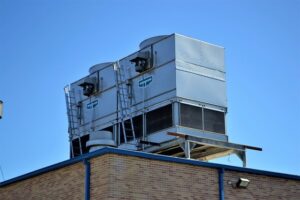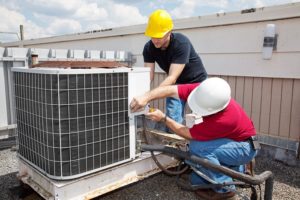Understanding SEER Ratings

Purchasing a new HVAC system is a big long-term investment. With all the factors to consider – different types of units, filters, BTUs and SEER ratings, the process can be overwhelming. This post will cover the basics of SEER ratings to help you invest with confidence.
WHAT IS A SEER RATING?
The acronym SEER means Seasonal Energy Efficiency Ratio or (incorrectly) referred to as Seasonal Energy Efficiency Rating. A SEER rating is the measurement of the amount of energy your air conditioning unit needs to be efficient.
To calculate the SEER rating of a unit, HVAC engineers divide the cooling output by the electricity consumed.
Without trying to be too technical, the system’s output is computed by taking a constant indoor temperature and calculating the energy used to maintain the indoor temperature against a variety of outdoor temperatures, ranging from sixty (60) degrees to one hundred (100) degrees to simulate a typical summer season.
WHAT IS A GOOD SEER RATING?
The higher the unit’s SEER rating = more energy efficient. As new units roll off the assembly lines, they must have a minimum rating of 13 or 14 (depending on where you live) to a maximum of 21 – 25.
To put things into perspective, a 13 or 14 SEER rating, even though at the low end of the spectrum still offers energy efficiency. For example, if you own an older system, chances are the SEER rating is 8 or 9. By upgrading to a modern unit with a 13 or 14 SEER rating, your HVAC efficiency will dramatically improve.
SEER ratings are not a constant value. The rating reflects the air conditioning unit’s maximum possible efficiency. But, the unit will not always function at maximum capacity.
The best comparison is a car’s gas mileage. A car may get 35 miles per gallon (MPG) on the highway. Under other circumstances, like city traffic, the MGP will be much lower.
REGIONlAL SEER RATINGS
In 2015, the US Department of Energy (DOE) implemented energy conservation standards for many everyday appliances, including HVAC systems, in an effort to lower utility costs and save consumers billions of dollars.
With the diverse climate of the United States, the DOE decided that one rating for the entire country would not suffice. So, they divided the country into regions, and gave each region the appropriate rating based on population, area temperature and humidity.
The states of the United States were divided into three regions – Southeast, Southwest and North. The minimum SEER rating for each region, set by the DOE is –
- Southeast – 14
- Southwest – 14
- North – 13
THE BEST SEER FOR ME
Air conditioning units with higher SEER ratings are more expensive. While it may be presumed that the unit with the highest SEER will produce the most efficient energy savings for your home, that may not be true.
The truth is there are other factors than the SEER rating of an air conditioning unit to determine the maximum efficiency.
- The correct AC capacity for the home.
- The design and condition of current ductwork.
- The amount of insulation in the home.
If these conditions are adequate before purchasing your new unit, it may be that a SEER of 14 would produce sufficient savings.
Your HVAC expert can help calculate the cooling cost or two units with different SEER ratings, and estimate the savings over a period of 1, 5, 10 or 15 years. To estimate your current air conditioning cost versus a new unit, you will need three pieces of information.
- The SEER rating of your current air conditioning unit.
- The size (in tons) of your current air conditioner.
- The current cost of electricity in your state and the estimated annual cooling hours (Houston is 2,200 to 2,400.)
The estimated savings are impressive in most cases. However, the main goal is to determine if the savings justify the initial investment.
Author’s Bio
Michael Tobias PE is a visionary in the construction industry. His passion resonates as the Founding Principal of New York Engineers, an Inc 5000 fastest growing company. New York Engineers is the most innovative construction engineering firm focusing on Mechanical, Electrical and Plumbing (MEP) engineering designs in Chicago and New York. Michael has overseen the design of over 1000 construction projects in all market sectors, including LEED certified and Passive House certified projects. He leads a global team of 50 top performers.


